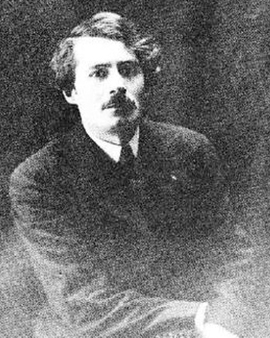The life of the French painter Georges Valmier was a perpetual journey through the facets of artistic expression. From a young age, the flames of art ignited an unquenchable fire within him. Through his artistic discovery of Cubism, Valmier established himself as a multi-faceted artist whose skills extended far beyond painting. Theater stages and ballet halls shone with his sets and costumes, and he even added designs to carpets and other everyday objects. His artistic work was always inspired by music, from which he transferred harmonies and rhythms into the world of colors and shapes, with public performances of works by great composers such as Debussy, Ravel and Fauré.
Valmier's path to artistic mastery began in 1905 at the Académie Humbert before he began his studies at the prestigious École des Beaux-Arts de Paris two years later. During this time, he created a variety of portraits, still lifes, and landscapes influenced by the revolutionary Cubism of the time. The exhibition at the Salon d'Automne, where he came across the early Cubist works of Georges Braque and Paul Cézanne, opened up new sources of inspiration for him. His works reflect a fascinating prismatic decomposition of the pictorial motif that transports the viewer into a world of geometric complexity. In 1913, the first presentation of his works took place at the Salon des Indépendants, where the public could enjoy art prints of his works.
The First World War also left deep marks on Valmier. During his time in military service, he recorded the harrowing experiences in his "Carnets de guerre" (War Notes). After the war, he returned to Paris and met Léonce Rosenberg, a dealer who was enthusiastic about Valmier's art and took him under contract. In the years that followed, numerous exhibitions and publications took place as Valmier continued to develop artistically. He began to explore individual motifs more intensively, creating various gouaches and collages. Beginning in 1922, he again began to incorporate cubist elements into his work, developing harmonious geometric compositions with intense colors.
With the year 1928, a renewed change in Valmier's artistic expression occurred. The previously dominant straight lines gave way to curved, almost organic-looking forms. Towards 1930 Valmier finally turned entirely to abstract painting, a development that had already been apparent in his earlier works. Despite his far too early death in 1937, Valmier left behind an impressive artistic legacy. Our art prints, created with the utmost care and attention to detail, offer the opportunity to let this legacy live on and make it accessible to every art lover.
×





.jpg)
.jpg)
.jpg)
.jpg)
.jpg)
.jpg)
.jpg)
.jpg)
.jpg)
.jpg)
.jpg)
.jpg)
.jpg)
.jpg)
 - (MeisterDrucke-132118).jpg)
 - (MeisterDrucke-132118).jpg)
.jpg)
.jpg)
.jpg)
.jpg)
.jpg)
.jpg)
.jpg)
.jpg)
.jpg)
.jpg)
.jpg)
.jpg)
_-_(MeisterDrucke-552452).jpg)
_-_(MeisterDrucke-552452).jpg)
.jpg)
.jpg)
.jpg)
.jpg)
_-_(MeisterDrucke-1347480).jpg)
_-_(MeisterDrucke-1347480).jpg)
.jpg)
.jpg)
.jpg)
.jpg)
.jpg)
.jpg)
.jpg)
.jpg)
.jpg)
.jpg)
.jpg)
.jpg)
.jpg)
.jpg)
.jpg)
.jpg)
.jpg)
.jpg)
.jpg)
.jpg)
.jpg)
.jpg)






